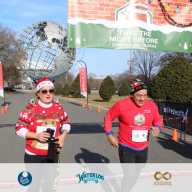Food and real estate. Not always in the same sentence, yet actually always connected. Our food (after it arrives from farms) is washed, sorted, peeled, processed, packaged and shipped from a warehouse in the industrial part of town. It is then sold as grocery or served by a waiter at a retail location near you. Or, for a great number of New Yorkers, delivered via bicycle, trucked by Fresh Direct, or mailed inside a box full of dry ice. It’s been this way for quite some time, ever since the farms of the Long Island began converting into factories and apartment buildings of today’s Queens County.
It seems what we eat, and how it is grown and prepared, is always undergoing transformation. For example, organizations like Brooklyn Grange, Eagle Street Rooftop Farms and BK Farmyards, among many others, grow food crops on rooftops and inside urban gardens. A growing number of restaurant chefs attempt to grow their own herbs and vegetables in the city. The most ambitious one: Valentino’s on the Green in Bayside will try to “produce 80 percent of the restaurant’s herbs, vegetables, fruits, fish, seafood and mushrooms using stacks of modified shipping containers”.
I myself have noticed increased tenant activity in the organic, sustainable and natural food category. From hydroponic farms inside warehouses to organic stores, neighborhoods like Long Island City and Astoria are slowly catching up to Brooklyn. From BluePrint Cleanse juices on 38th Street, to BAO Foods’s Kombucha Tea on Borden Avenue, ultra-healthy products made naturally or organically in Queens are making headlines nationally. BAO has even initiated a sort of a food incubator inside its factory, offering access to USDA-certified organic kitchen to start-ups and small operators who normally can’t afford access to commercial space or equipment. We’ve also worked recently with a gluten-free commercial bakery and raw cookies manufacturer. It seems everyone wants to come to this part of town because NYC is simply the most exciting market for these specialty foods.
Even the city government is chipping in. On 37th Street off Northern Boulevard, a special kind of Entrepreneur Space sponsored by Queens Economic Development Corporation (QEDC) sits inside a warehouse: a Food and Business Incubator. It features 24/7 access to commercial kitchens, use of professional equipment, commercial refrigeration and office space for food start-ups, offered at below-market rates, allowing small businesses and newbie operations to get started without large capital investment and expensive overhead.
As food consumers, New Yorkers now have a grade system to help them choose a restaurant based on cleanliness. We judge restaurants using “A’s,” “B’s” and “C’s” as if we really understood how these grades are assigned. But looking at store shelves and menus, words like “organic,” “all-natural,” “raw” and “locally-grown” are on the rise and certainly in vogue. And, it is actually quite possible today to eat a whole meal made using ingredients entirely grown and prepared somewhere between 58th Street and the East River, between Bowery Bay and Newtown Creek. It’s come a full circle in a way, because as recently as 100 years ago most of Queens was actually all farmland. Take a trip to the Queens County Farm Museum to see the proof. Bon Appétit!































